

Evacuation planning has become a critical component of disaster management operations in recent years. Each year, millions of people around the world are affected by evacuation orders due to the increasing frequency and severity of natural disasters (Figure 4.4), along with periodic industrial/technological incidents and malevolent/terrorist activities.
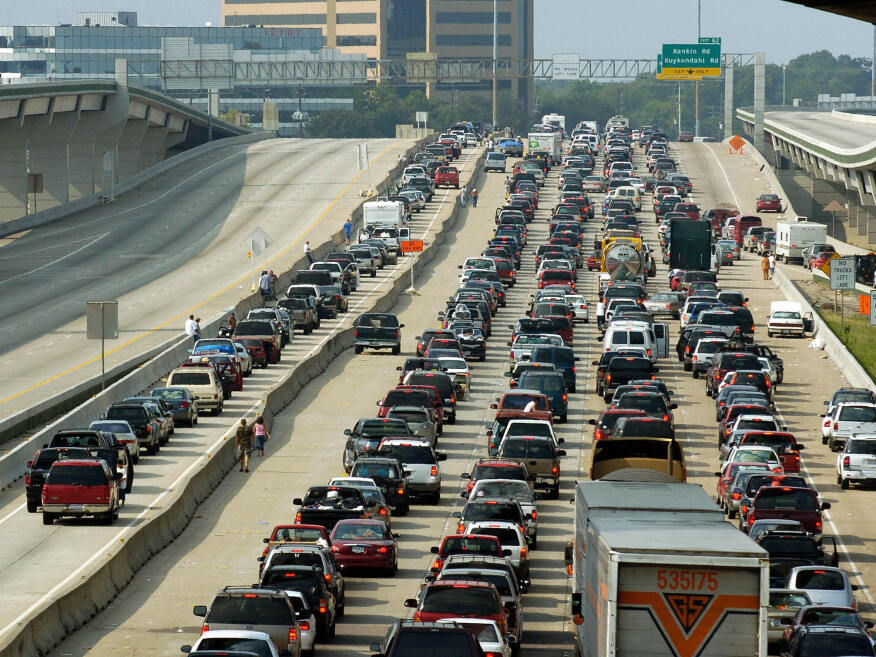
Figure 4.4 Houston residents evacuate due to imminent threat of Hurricane Rita
These disasters teach us the importance of planning, coordinating, and executing evacuations as a primary protective action regardless of the threat or hazard. The challenge is to quickly identify the appropriate level of action necessary to address a variety of factors, including the community’s demographics, infrastructure, resources and authorities.
The primary authority and responsibility for evacuation typically begins with the local government working in conjunction with the community. Prior to an incident, jurisdictional governments should engage with public and private sector partners, nongovernmental organizations, faith-based organizations, and individual community members so there is an understanding of the roles and responsibilities of each partner along with the authorities and limitations that exist.
Evacuation orders are issued by the jurisdictional authority. This authority will also manage traffic flow, identify evacuation routes, and consider any necessary respite site needs if food, water, and fuel availability is limited.
Clear and concise messaging, in multiple accessible formats, is critical in order to actively engage citizens in the event of a voluntary or mandatory evacuation. This will include static and dynamic signage, social media, public emergency alert systems, and other available resources. Messaging should be pre-approved by the appropriate jurisdictional authority and advise the public of necessary actions, including the specific threats or hazards impacting their community. It is critical that authorities continuously monitor social media during the event to identify any contradictory statements and attempt to correct inaccurate accounts of the situation.
Public awareness of the hazard, of evacuation procedures, and especially of alerting methods contribute to the efficiency and effectiveness of an evacuation. In addition, community familiarity with alerting methods is closely related to evacuation efficiency. Cooperation from evacuees contributes to safe, efficient, and effective evacuations. 1
A well-developed training and exercise program is also a critical element of overall readiness and preparedness for mass evacuations. Training ensures personnel are prepared for their roles. Exercises test the capabilities and resources of the agencies, and when a number of cooperating agencies and jurisdictions are included, they also test and strengthen working relationships. Training and exercises to test and improve plans for an evacuation from a catastrophic incident are especially important because of the large number of agencies and jurisdictions involved in such an evacuation. 2
Several important factors should be considered when making a decision to evacuate an area, but the primary consideration is the potential risk to lives and property. The type of evacuation will be based on the situation. Evacuations are generally classified as one of three types:
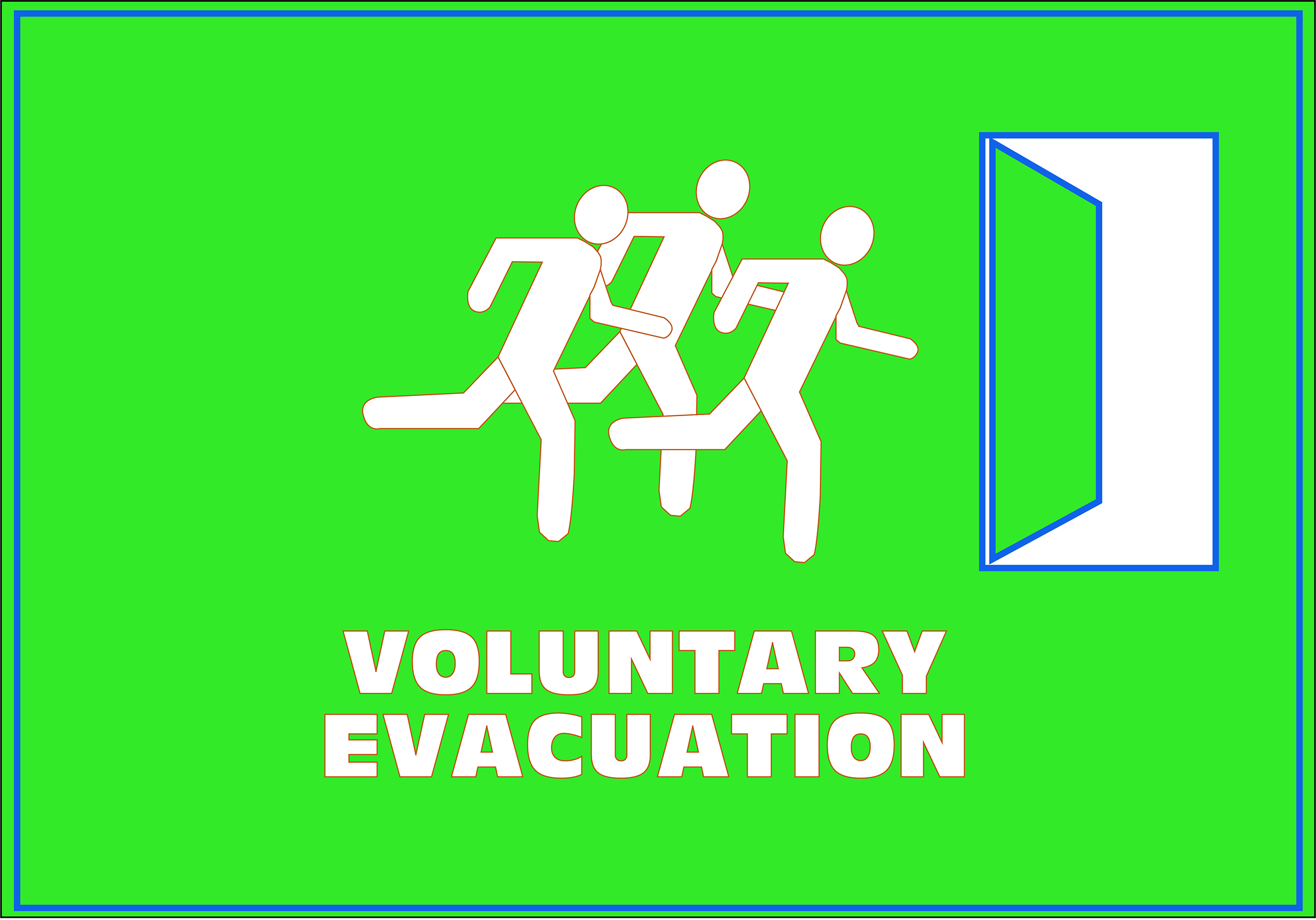
Figure 4.4.1.1 Voluntary Evacuation
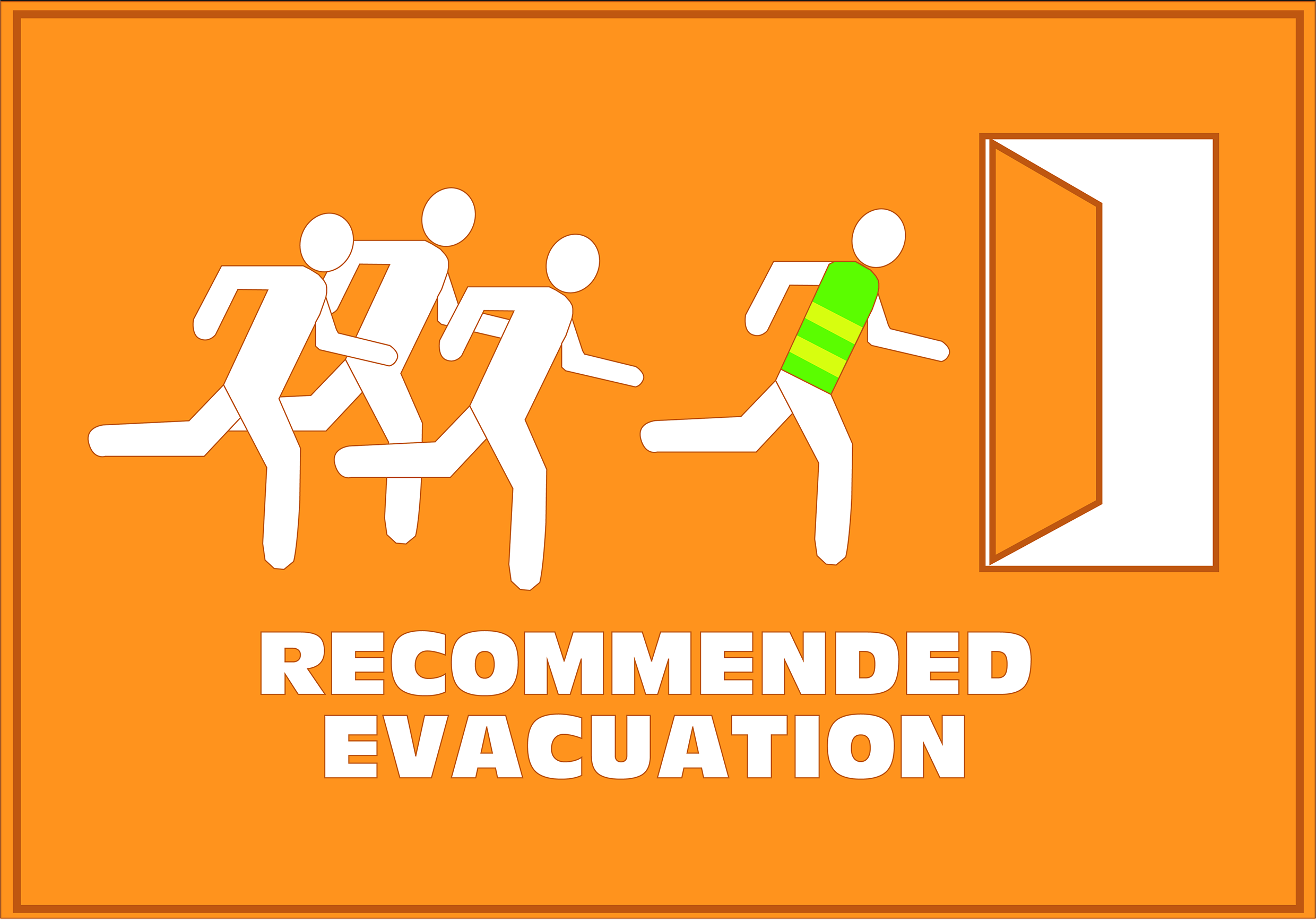
Figure 4.4.1.2 Recommended Evacuation

Figure 4.4.1.3 Mandatory Evacuation
Disaster related evacuations generally occur in multiple phases which may include readiness/preparation, activation/notification, evacuation/displacement, and re-entry/recovery.
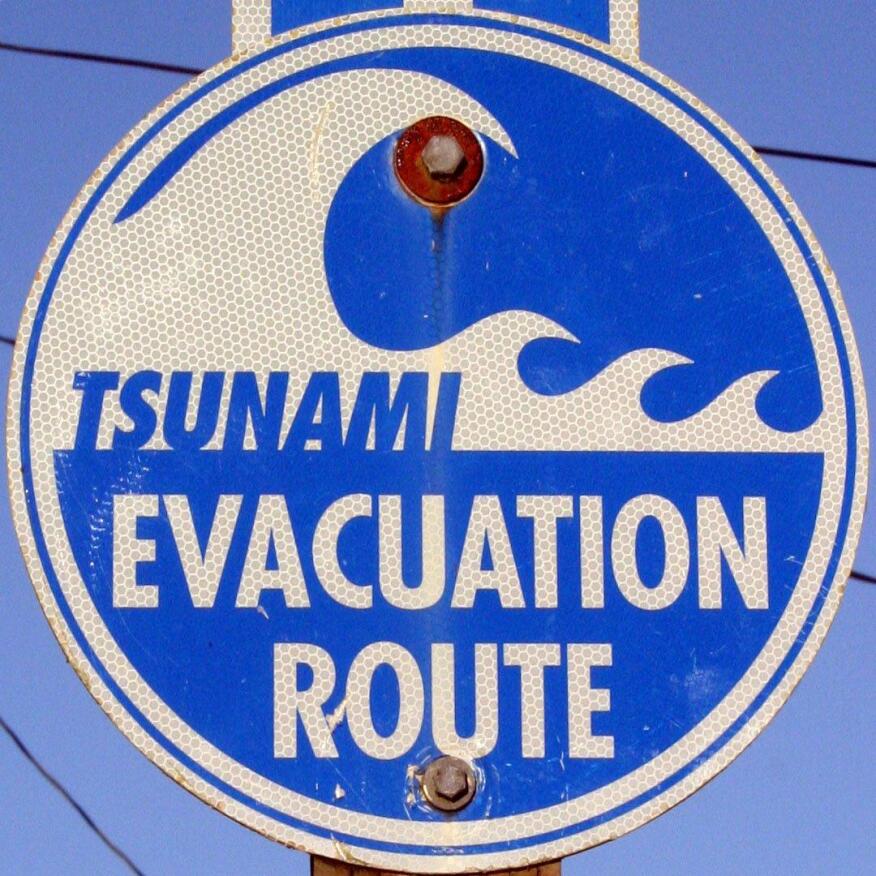
Figure 4.4.2.1 Permanently mounted tsunami evacuation route sign
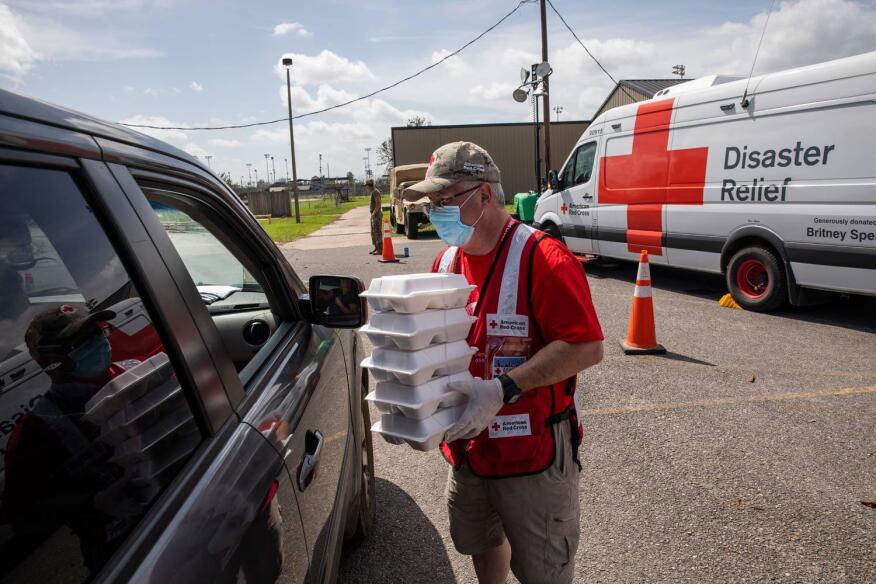
Figure 4.4.2.2 American Red Cross distributes food to evacuees following a disaster
Traffic management is critical during disaster evacuations to minimize congestion and decrease time. Effective traffic management allows a jurisdiction to evacuate more people from a community in an efficient manner, which reduces the burden on personnel and resources.
Understanding how evacuees may react when confronted with a potential threat or hazard is critical to evacuation planning efforts. Many individuals possess the capability to evacuate from a potentially dangerous area using their own transportation with minimal or no assistance. Others may not have access to transportation or have special needs and require accessible transportation assistance to evacuate the impacted area.
Prior to a jurisdiction issuing an evacuation order, individuals may decide to self-evacuate in reaction to a perceived threat or following an actual incident that has already occurred. These spontaneous evacuees can complicate operations and add confusion to the process. Educating citizens in the identified hazard areas prior to disaster events, clearly defining evacuation routes (Figure 4.4.3-1), and providing timely threat and hazard information are ways to help lessen the impact of spontaneous evacuations.
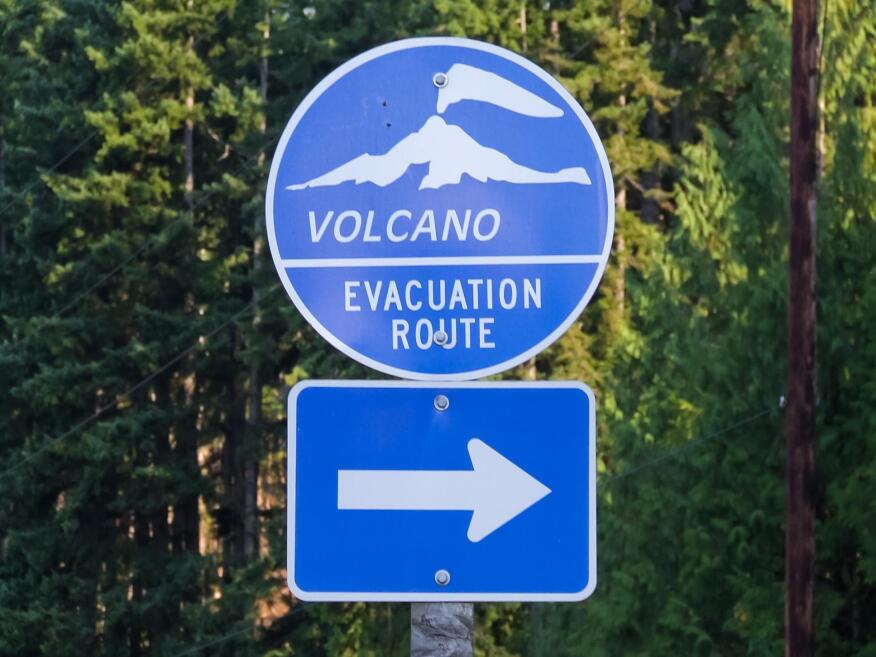
Figure 4.4.3-1 Example of an evacuation route sign to assist self evacuees
Emergency managers should consider consulting with local tourist destination leaders to discuss the impact of tourist populations on evacuation plans and routes and to identify steps for making evacuation and sheltering decisions. 1
When planning for traffic management, jurisdictions should identify any potential issues related to each specific route (e.g., height or weight restrictions, signal timing, rail crossings) and any resources that may be needed to address these considerations.
Dynamic message signs (Figure 4.4.3-2) and portable signage along evacuation routes can help inform evacuees of respite sites, shelter locations, fuel availability, and medical treatment facilities. Additionally, other traffic incident management strategies and resources such as safety service patrols and towing should be active to maintain the efficiency of evacuation routes.
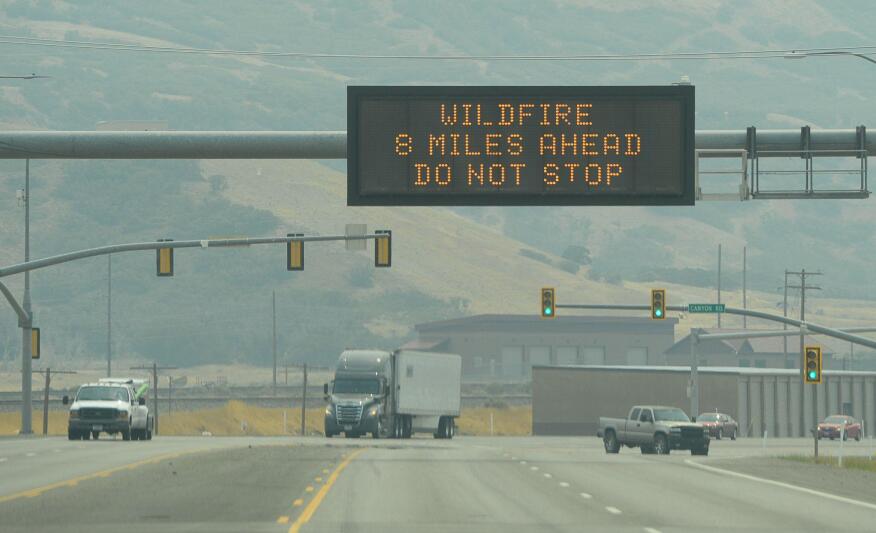
Figure 4.4.3-2 Dynamic message sign assisting evacuees during a wildfire
Failing to effectively manage traffic during an evacuation increases the burden on resources, extends evacuation times, increases incidents and congestion, and may leave evacuees in vulnerable conditions.
Evacuating impacted individuals prior to or immediately following a disaster can be difficult due to limited transportation infrastructure. Under certain conditions, contraflow lane reversal may provide additional capacity to an existing roadway system to expedite the evacuation process.
Contraflow lane reversal modifies the normal flow of traffic to aid in increasing the flow of outbound vehicle traffic during an evacuation (Figure 4.4.3.1.1). Typically, one or more lanes in the opposing direction of a controlled-access highway are used to increase capacity during the evacuation/displacement phase.
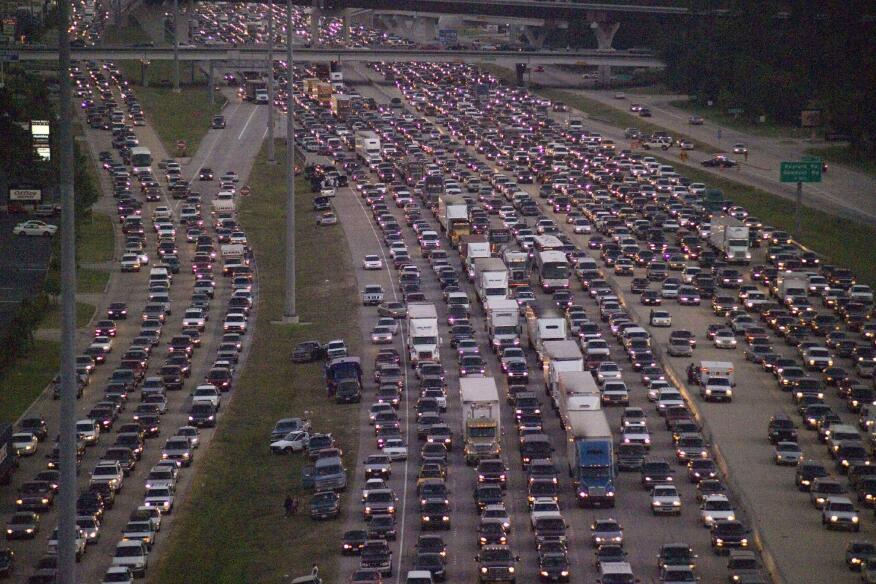
Figure 4.4.3.1.1 Utilizing contraflow to evacuate Houston, Texas ahead of hurricane Rita
Contraflow operations require considerable planning to avoid any interference with response operations since necessary resources will likely be mobilizing into the area while evacuations are taking place. Contraflow may also create issues if the transition from contraflow reversed lanes back to normal lanes is not properly planned. This transition can create bottlenecks and confusion for drivers and significantly slow the evacuation. Contraflow operations also require a significant amount of time and resources to be safely implemented and are therefore most beneficial during large-scale evacuations. Permanently installed traffic control devices and signage will expedite the activation of contraflow plans and free up valuable resources ahead of a disaster (Figure 4.4.3.1.2).
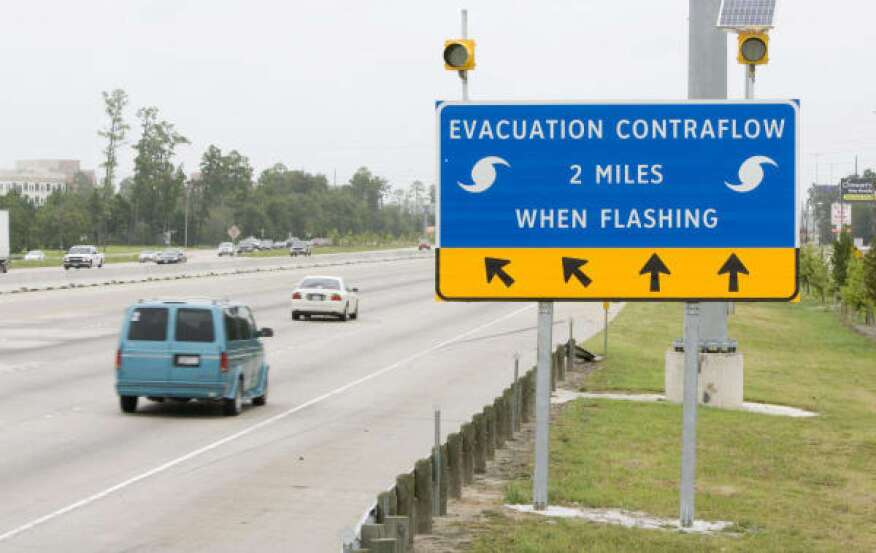
Figure 4.4.3.1.2 Permanently installed signs assist with contraflow during a disaster
Contraflow procedures almost always occur on controlled-access highways. Most contraflow plans operate on divided four-lane controlled-access highways. Traffic in all four lanes is traveling away from the disaster location toward destinations where the dangers posed by the approaching hazard are significantly reduced. Contraflow can also be implemented such that one lane remains in normal operation, carrying disaster response traffic toward the impacted area.
An important consideration in contraflow is the termination point. The inbound traffic is twice the normal flow and must be distributed to minimize congestion. This can be accomplished by locating the terminus at a freeway interchange with direct-connect ramps with a crossover just past the interchange for through traffic. Another method is to use multiple termini directing each lane of contra-flow to a separate exit. Based on infrastructure and traffic needs, the termini should be selected to minimize congestion and driver confusion.
Utilizing shoulders of evacuation routes during a disaster can increase traffic flow out of an evacuation area. Part-time shoulder use is a transportation system management and operation strategy for addressing congestion and reliability issues within the transportation system. There are many forms of part-time shoulder use; however, they all involve use of the or shoulders of an existing roadway for temporary travel during certain hours of the day or the duration of large-scale evacuations (Figure 4.4.3.2).
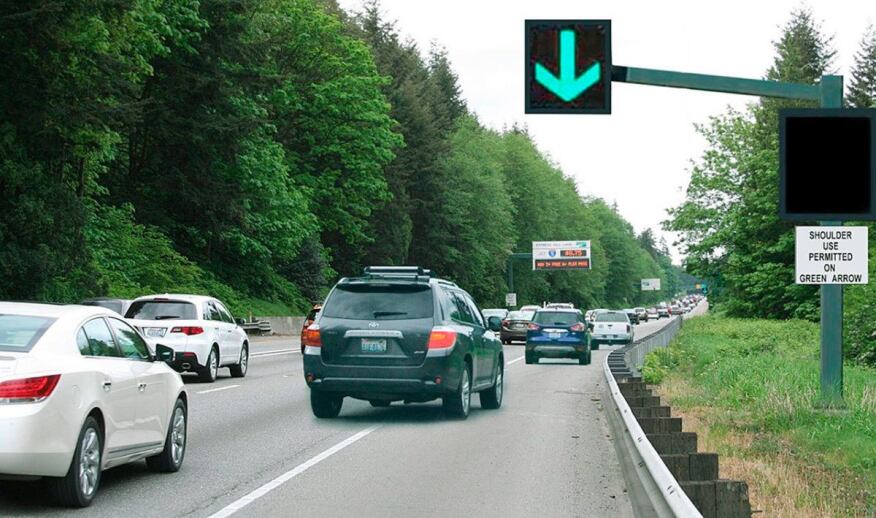
Figure 4.4.3.2 Freeway shoulders utilized to increase capacity and improve traffic flow
Part-time shoulder use is a form of active traffic management which modifies roadway conditions and controls – in this case the number of lanes – in response to forecast or observed traffic conditions. It may be used in combination with other traffic management strategies, such as overhead lane control signs, dynamic speed limits, and queue warning.
Although part-time shoulder use can be a very cost-effective solution, it may not be an appropriate strategy where minimum geometric clearances, visibility, and pavement requirements cannot be met, or it may have an adverse impact on safety. Part-time shoulder use is primarily used on freeways. Typically, the use is temporary for part of the day or during the evacuation phase of an incident, and the lane continues to operate as a refuge/shoulder when not being used for these travel purposes.
Fuel management is a crucial consideration that jurisdictions must address during the disaster evacuation planning process. Failure to ensure ample fuel supplies are available after an incident will lead to fuel shortages along with associated congestion (Figure 4.4.3.3.1) and impacts to traffic patterns which will negatively affect evacuation operations.

Figure 4.4.3.3.1 Vehicles wait to refuel during following a disaster evacuation order
Supplies of fuel should be maintained to support response and evacuation operations prior to and during an incident, along with the recovery operations immediately following an incident. Partnering with bulk fuel vendors to prioritize deliveries at critical locations will help mitigate the risk of fuel shortages during the initial response.
When planning evacuation routes, consideration should be given to those which have ample businesses to provide fuel to evacuees. Station owners should be encouraged to install generators in the case of power loss, as fuel will be inaccessible without power. An effort should be made to ensure that secondary evacuation routes also have fuel resources available; this may require planning for a temporary respite/fueling site. Working with private sector partners to identify temporary fueling capabilities and supplies is critical in areas where private fueling stations are unavailable.
In areas with an increased number of alternative fuel vehicles, efforts should be made to identify and communicate the locations of alternative fuel sites along the selected evacuation routes (Figure 4.4.3.3.2).
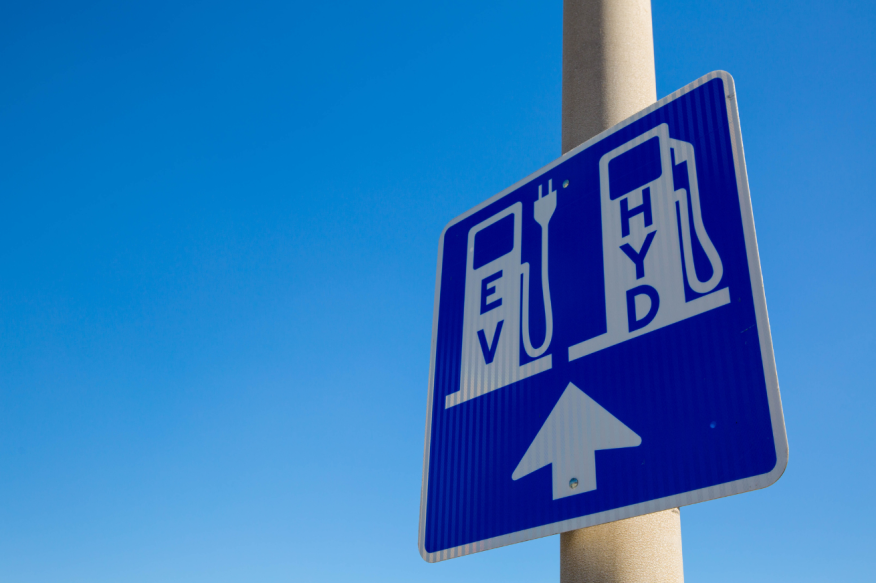
Figure 4.4.3.3.2 Permanent signs indicate alternative fueling locations along evacuation route
The following are transportation, weather, and assessment monitoring and prediction tools that can support an evacuation. 1
Clarus — This is a system that helps predict weather conditions. For those evacuating in advance of a severe storm, weather information plays a key role in their safety. Tropical storms and hurricanes may spawn tornados well in advance of the front and may inundate an area very rapidly. Many victims of storms actually perish due to resultant flooding or secondary tornados. Travelers must be aware of the weather and their environment at all times when evacuating an area. Clarus and other modeling tools available through the National Weather Center are vital to assessing dangers to evacuees while traveling along the evacuation route.
Consequence Assessment Tool Set/Joint Assessment of Catastrophic Events (CATS/JACE) — This model was developed under the guidance of FEMA and the Defense Threat Reduction Agency. The CATS/JACE software provides disaster analysis in real time with an array of information integrated from a variety of sources. The software is deployable for actual emergencies with capabilities including contingency and logistical planning as well as consequence management. The CATS program integrates hazard prediction, consequence assessment, and emergency management tools with critical population and infrastructure data. It uses tools and data that predict the hazard areas caused by manmade events and natural disasters including earthquakes and hurricanes. CATS assists with estimating collateral damage to facilities, resources, and infrastructure, and creates mitigation strategies for responders.
Dynamic Network Assignment-Simulation Model for Advanced Road Telematics (Planning version)—DYNASMART-P — FHWA supported the development of this model by the University of Maryland to support network planning and traffic operations decisions through the use of simulation-based dynamic traffic assignment. FHWA is examining the application of this model for emergency transportation management analysis.
Evacuation Traffic Information System (ETIS) — FHWA currently supports the ETIS, which is a web-based program that facilitates the sharing of evacuation and traffic information among coastal states in the Gulf Coast and southeast from Texas to Virginia. The ETIS supports decisions such as evacuation type (e.g., voluntary, mandatory, staged) and implementation of contraflow or lane-reversal operations. The ETIS was originally developed under the auspices of the U.S. Army Corps of Engineers, but is now under FHWA sponsorship, and operated by its private developers.
Evacuation Travel Demand Forecasting System — This is a macro-level evacuation modeling and analysis system that was developed in the aftermath of Hurricane Floyd to address the need to forecast and anticipate large, cross-state traffic volumes. This is a web-based travel demand forecast system that anticipates evacuation traffic congestion and cross-state travel flows for North Carolina, South Carolina, Georgia, and Florida. The Evacuation Travel Demand Forecasting System model was designed so emergency management officials can access the model online and input hurricane category, expected evacuation participation rate, tourist occupancy, and destination percentages for impacted counties. The output of the model includes the expected level of congestion on major highways and tables of vehicle volumes expected to cross state lines by direction.
Hazard U.S.—Multi-hazard (HAZUS-MH MR2) — Developed by FEMA, this model is a loss estimation and risk assessment program covering earthquakes, hurricanes, and flooding. By modeling the physical world of buildings and structures and then subjecting it to the complex consequences of a hazard event, users can implement this tool to prepare for a natural disaster, respond to the threat, and analyze the potential loss of life, injuries, and property damage.
Hurricane and Evacuation (HURREVAC) — This is a program that uses GIS data to correlate demographic data with shelter locations and their proximity to evacuation routes to estimate the effect of strategic-level evacuation decisions.
MASS eVACuation (MASSVAC) — This is a macro-level model originally developed for the purpose of modeling nuclear power plant evacuations. More recently, it was applied to test operational strategies for hurricane evacuations in Virginia.
Network Emergency Evacuation (NETVAC) — NETVAC was developed as part of the reaction to the Three-Mile Island nuclear reactor incident in 1979. While strong in terms of a response to a Point A-to-Point B situation, it is limited in application to hurricane evacuation, which often includes multiple Points A and B. However, transportation and emergency managers may seek to use this model to analyze route selection, intersection controls, and lane management.
Oak Ridge Evacuation Modeling System (OREMS) — This is an evacuation analysis tool designed to simulate traffic flow during various defense-oriented emergency evacuations. The model can be used to estimate clearance times and identify operational traffic characteristics and other information such as evacuation routes and times necessary to develop evacuation plans. It also allows users to experiment with alternate routes, destinations, traffic control and management strategies, and evacuees’ response rates.
Plume Modeling Tools — These are models used to predict where a plume may travel from its release location. The plume may be created by a radiological release, chemical release, smoke from fires, or some other situation that causes airborne contaminants to travel across an area. There are many plume models in use; most are specific to the type of event and can be modified to accept site specific data such as wind speed, direction, and other factors affecting the spread of the plume. Such models are important in determining where a plume may spread and how fast it may travel, and in defining a geographic area that should be evacuated or an area for occupants to shelter-in-place.
Sea, Lake, and Overland Surges from Hurricanes (SLOSH) — The most widely applied flooding model for evacuation analysis is the SLOSH model. Developed by the NWS to predict hurricane storm surge for a given set of conditions (e.g., hurricane strength, wind speed, direction of movement, and geography), it is also used to help plan evacuation routes and locate emergency shelters based on estimates of which geographic areas could be flooded under certain storm scenarios. The NHC, in coordination with Federal, State, and local organizations, has developed SLOSH models for over 38 water basins along the Atlantic and Pacific Ocean coastal areas with 14 “SLOSH Basins” covering the State of Florida
Traffic Estimation and Prediction System (TrEPS) — FHWA has been working on Dynamic Traffic Assignment research projects. The main objective of the research projects is to develop a deployable real time Traffic Estimation and Prediction System (TrEPS).
Hurricane evacuation planning has become increasingly important as extreme weather events continue to increase in frequency and severity. Although hurricanes are among the most costly and dangerous types of natural disasters, they are also easily predicted and typically preceded by several days of advanced notice, allowing time to warn and evacuate large populations.
Hurricanes, known generically as tropical cyclones, are low-pressure systems with organized thunderstorm activity that form over tropical or subtropical waters (Figure 4.4.5.1). They gain their energy from warm ocean waters. Hurricanes, typhoons, and cyclones are actually all the same type of storm, but have different names based on where they form. In the North Atlantic and central and eastern North Pacific, these storms are called “hurricanes.” In the western North Pacific, they are called “typhoons” and in the South Pacific and Indian Ocean, they are called “cyclones.” (Tropical cyclones are rare in the South Atlantic.) 1
Tropical cyclones with maximum sustained surface winds of less than 39 miles per hour (mph) are called tropical depressions. Those with maximum sustained winds of 39 mph or higher are called tropical storms.

Figure 4.4.5.1 Hurricane Humberto, as captured by a NOAA satellite 1509.2019. (NOAA Satellites)
When a storm's maximum sustained winds reach 74 mph, it is called a hurricane. The Saffir-Simpson Hurricane Wind Scale is a 1 to 5 rating, or category, based on a hurricane's maximum sustained winds. The higher the category, the greater the hurricane's potential for property damage.
Hurricanes originate in the Atlantic basin, which includes the Atlantic Ocean, Caribbean Sea, and Gulf of Mexico, the eastern North Pacific Ocean, and less frequently, the central North Pacific Ocean. A six-year rotating list of names, updated and maintained by the World Meteorological Organization, is used to identify these storms.
Hurricane season begins on June 1 and ends on November 30, although hurricanes can, and have, occurred outside of this time frame. The United States National Oceanic and Atmospheric Administration (NOAA) National Hurricane Center predicts and tracks these massive storm systems, which occur, on average, 12 times a year in the Atlantic basin.
Hurricanes are dangerous and can cause major damage because of storm surge, wind damage, rip currents, and flooding (Figure 4.4.5.2). They can happen along any United States coast or in any territory in the Atlantic or Pacific oceans. Storm surge is historically the leading cause of hurricane-related deaths in the United States.
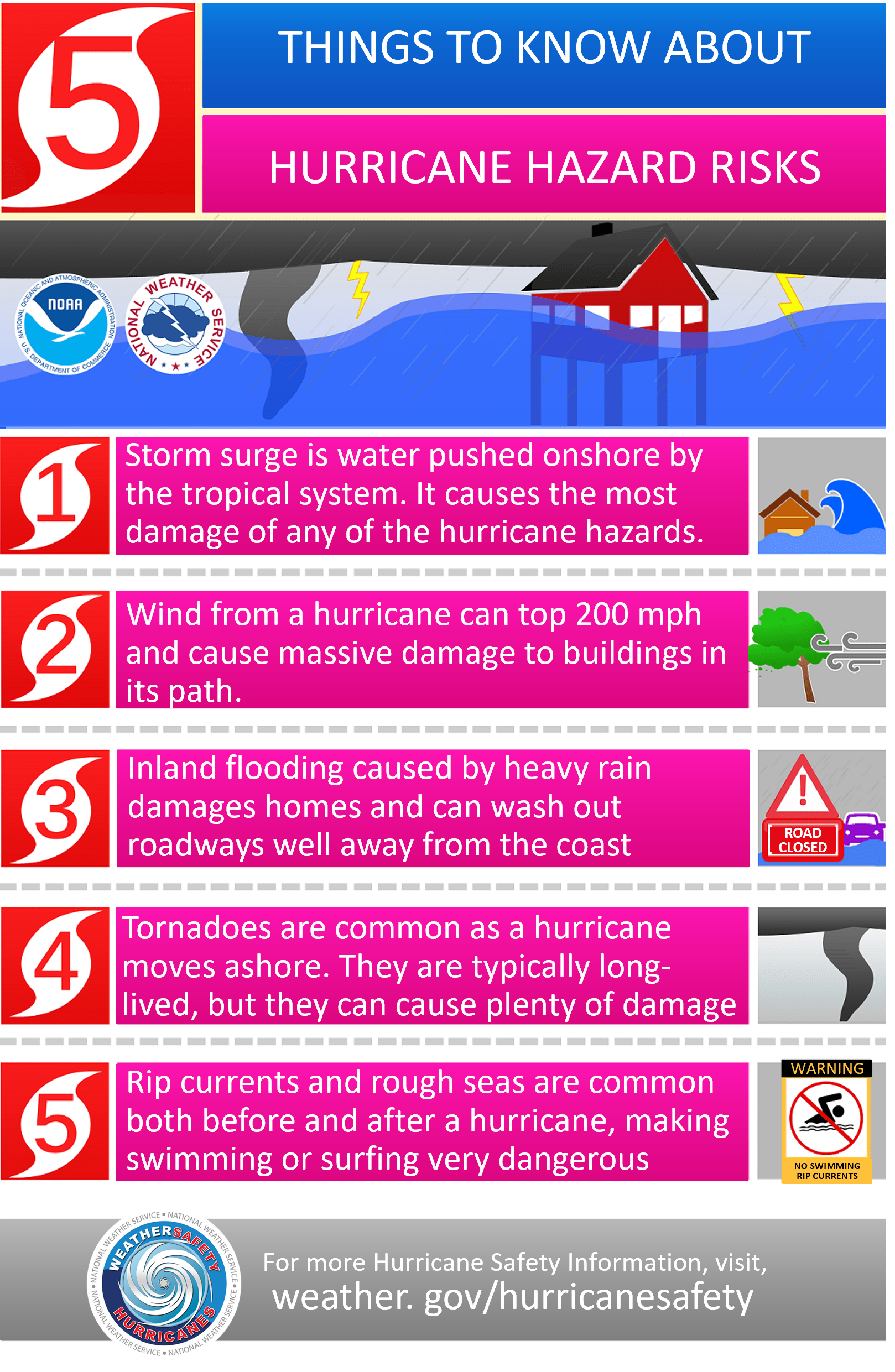
Figure 4.4.5.2 Hazard risks associated with hurricanes
Storm surge is an abnormal rise of water generated by a storm, over and above the predicted astronomical tides. Storm surge should not be confused with storm tide, which is defined as the water level rise due to the combination of storm surge and the astronomical tide (Figure 4.4.5.3). This rise in water level can cause extreme flooding in coastal areas particularly when storm surge coincides with normal high tide, resulting in storm tides reaching up to 20 feet or more in some cases.
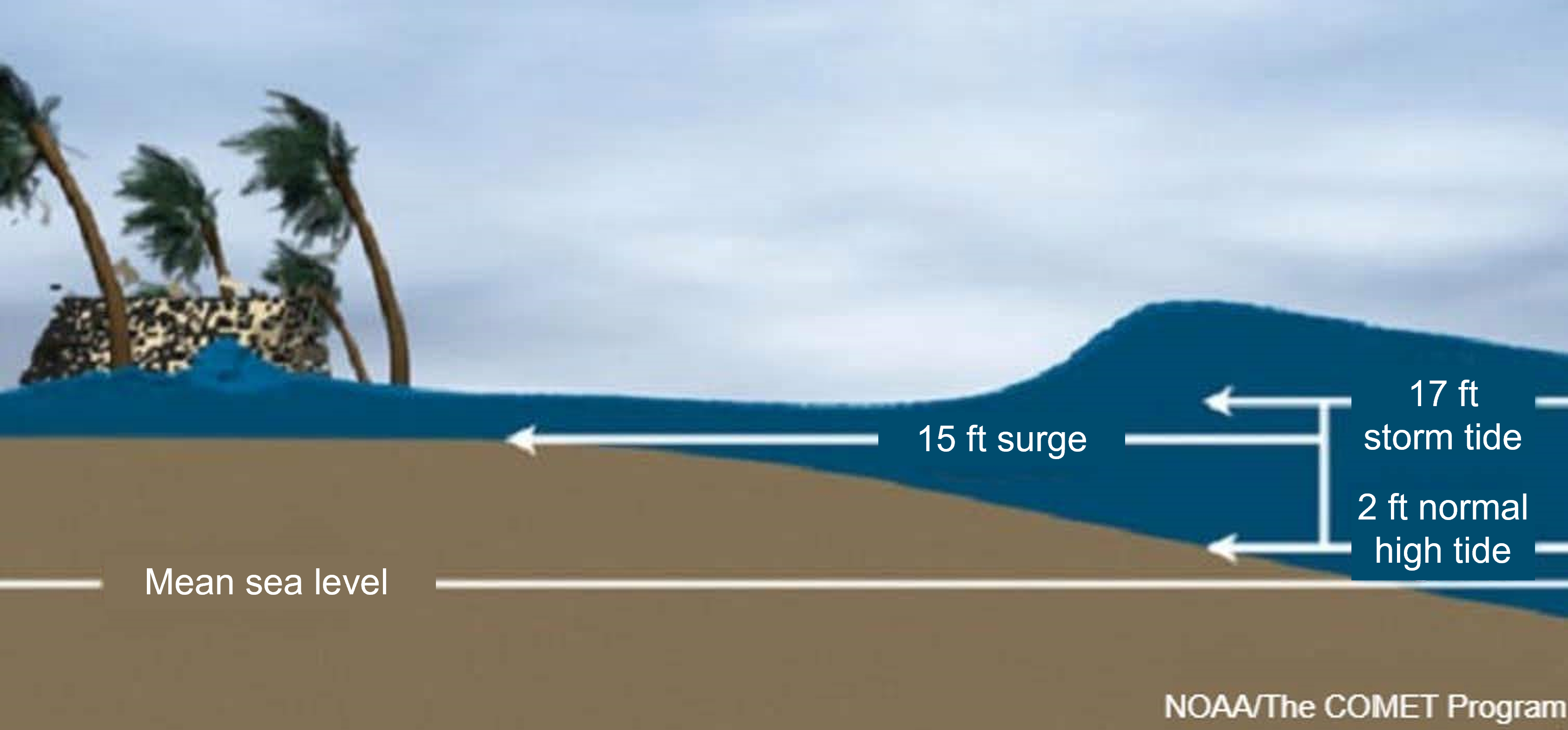
Figure 4.4.5.3 Illustration of storm surge vs. storm tide
Storm surge is produced by water being pushed toward the shore by the force of the winds moving cyclonically around the storm (Figure 4.4.5.4). The impact on surge of the low pressure associated with intense storms is minimal in comparison to the water being forced toward the shore by the wind.

Figure 4.4.5.4 Illustration of wind and pressure components of storm surge
The maximum potential storm surge for a particular location depends on a number of different factors. Storm surge is a very complex phenomenon because it is sensitive to the slightest changes in storm intensity, forward speed, size (radius of maximum winds-RMW), angle of approach to the coast, central pressure (minimal contribution in comparison to the wind), and the shape and characteristics of coastal features such as bays and estuaries.
Other factors which can impact storm surge are the width and slope of the continental shelf. A shallow slope will potentially produce a greater storm surge than a steep shelf. For example, a Category 4 storm hitting the Louisiana coastline, which has a very wide and shallow continental shelf, may produce a 20-foot storm surge, while the same hurricane in a place like Miami Beach, Florida, where the continental shelf drops off very quickly, might see an 8 or 9-foot surge.
Adding to the destructive power of surge, battering waves may increase damage to buildings directly along the coast (Figure 4.4.5.5). Water weighs approximately 1,700 pounds per cubic yard; extended pounding by frequent waves can demolish any structure not specifically designed to withstand such forces. The two elements work together to increase the impact on land because the surge makes it possible for waves to extend inland.
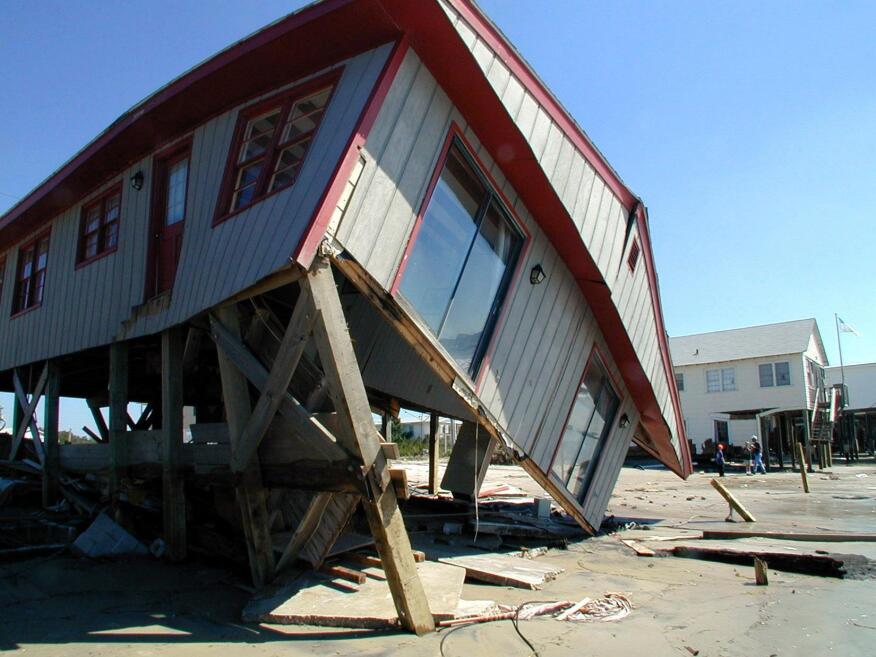
Figure 4.4.5.5 Damage to residential structure caused by storm surge
Additionally, currents created by tides combine with the waves to severely erode beaches and coastal highways (Figure 4.4.5.6). Buildings that survive hurricane winds can be damaged if their foundations are undermined and weakened by erosion. 2
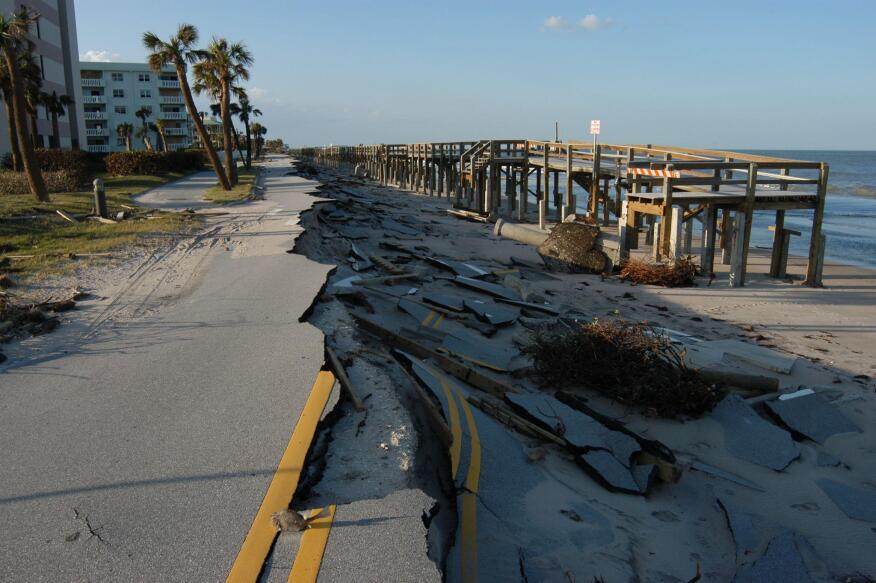
Figure 4.4.5.6 Erosion of a beach and nearby roadway due to storm surge and damaging waves
Hurricane evacuation is the immediate and rapid movement of people away from the threat or actual occurrence of a hurricane. Emergency managers and other officials may recommend a voluntary evacuation or order a mandatory evacuation. Understanding the risks and having an evacuation plan prior to a disaster event is critical, Figure 4.4.5.7 provides information related to evacuation planning considerations. Due to the numerous hazards related to hurricanes, evacuating should always be an option during strong hurricanes.
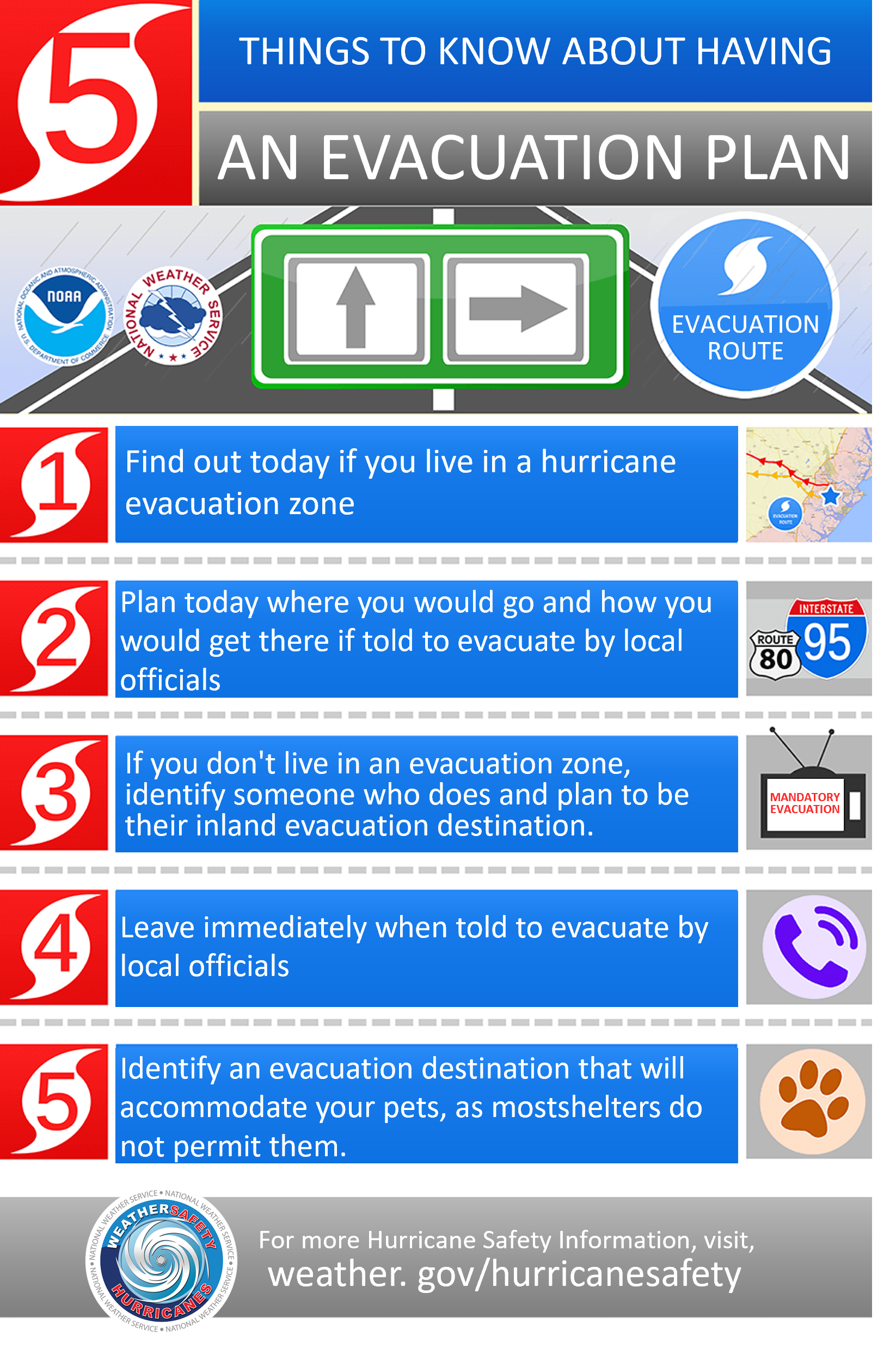
Figure 4.4.5.7 Considerations for hurricane evacuation planning
Despite mandatory evacuation orders many individuals still refuse to leave their homes. Some residents may believe that due to the monetary cost of evacuation and not being present to care for their home, evacuation is not a good choice. Officials advise that people who are not evacuating to carefully monitor severe weather updates provided by emergency broadcasting services, since the direction and potential danger of a hurricane may change suddenly.
A hurricane evacuation route (also called coastal evacuation route or evacuation route) is a highway that is a specified route for hurricane evacuation. Along the Gulf Coast, hurricane evacuation routes lead north and west for up to hundreds of miles to the safest major city. Along the Atlantic Coast, routes lead west. They are marked with blue signs that point in the correct direction (Figure 4.4.5.8).
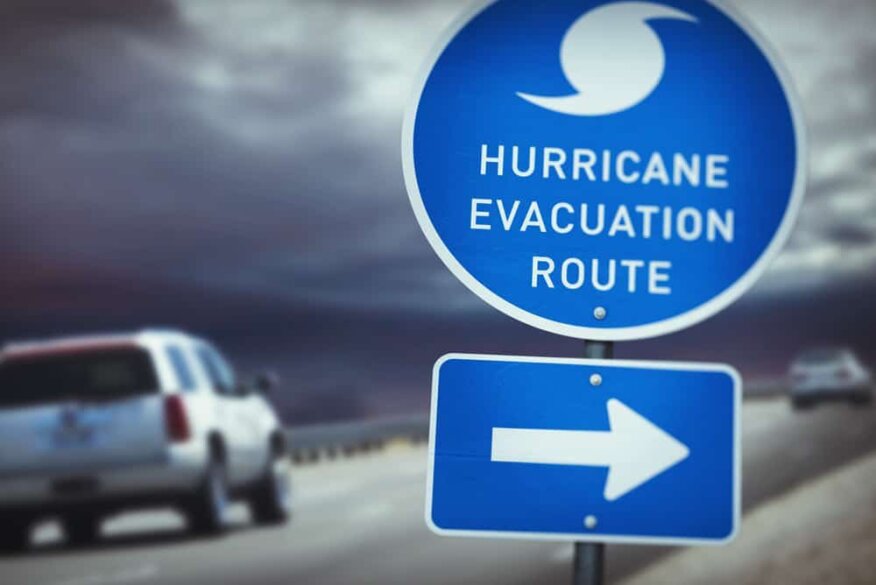
Figure 4.4.5.8 Hurricane evacuation route sign
During mass evacuations, these roads (and especially interstate highways) have been set up with paved crossover lanes so that both north and southbound lanes flow north and west and eastbound lanes flow west, a procedure known as contraflow. Utilizing shoulders of evacuation routes during a disaster can also increase traffic flow out of an evacuation area.
Several US coastal states have implemented a “Know Your Zone” public education campaign to inform residents (Figure 4.4.5.9), businesses and visitors of the hurricane evacuation zones and their vulnerability to storm surge.
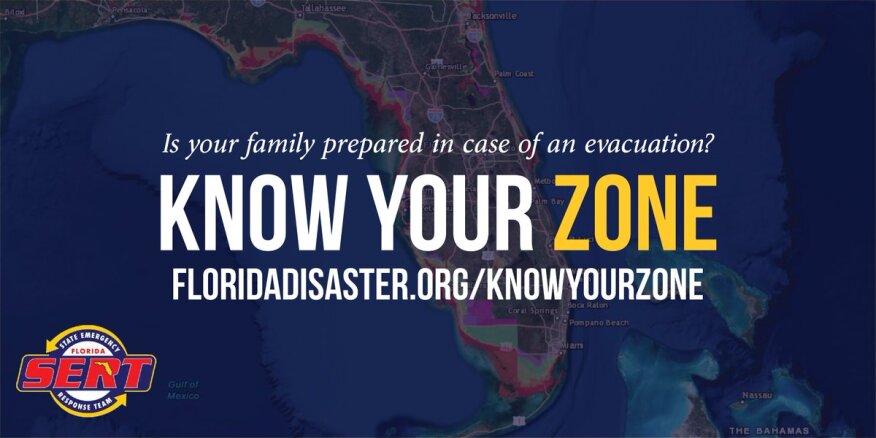
Figure 4.4.5.9 Florida “Know Your Zone” public education campaign message
When a storm is approaching, emergency managers will determine which zones are most at risk considering the intensity, path, speed, tides, and other meteorological factors. Emergency managers at the state and local level will work with local media and use social media and other tools to notify residents of impacted zones what they should do to stay safe.
In Florida, evacuation zones are designated by letters (Figure 4.4.5.10). Vulnerability may be assumed to increase as the designations go from Zone A to Zone E, with Zone A as the most vulnerable. Locations utilizing designated evacuation zones will use the letters when they order evacuations.
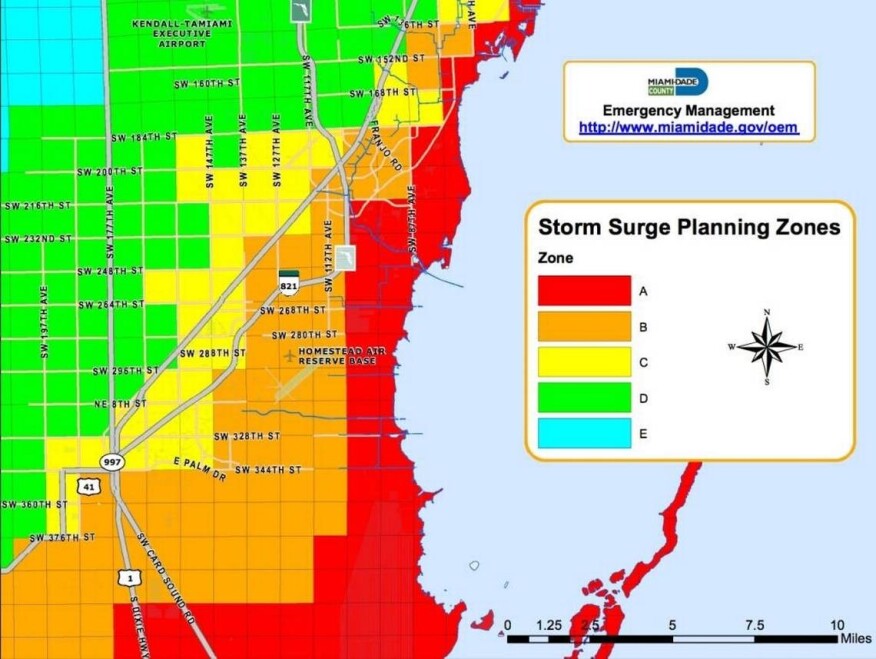
Figure 4.4.5.10 Example of Florida’s hurricane evacuation zones
On March 11, 2011, the Great East Japan Earthquake occurred. The magnitude (Mw) of the earthquake was 9.0 to 9.1, the largest ever recorded in Japan. A maximum seismic intensity of 7 was observed in parts of Miyagi Prefecture. The main quake, the resulting tsunami, and subsequent aftershocks caused tremendous damage throughout eastern Japan, from the Tohoku region to the Kanto region. Many people lost their lives.
The tsunami reached the coast of Iwate Prefecture about 25 minutes after the earthquake. Its speed is said to have reached several tens of kilometers per hour.
The maximum wave height was recorded at 9.3 meters at the port of Soma in Fukushima Prefecture 1, and the run-up height, which indicates the height up a slope, was 40.5 meters in the Shigemoe Aneyoshi district of Miyako City 2, the highest ever recorded in Japan. Analysis by Tohoku University revealed that the tsunami had traveled up the Kitakami River to a point about 49 km from its mouth 3.
Miyako Road, a 4.8-km section of the Sanriku Expressway, opened in March 2010. When the tsunami hit the area, about 60 residents managed to escape by climbing up the expressway embankment.
The Kamaishi–Yamada Road, a 23-km section of the Sanriku Expressway that was opened only six days before the 2011 Great East Japan Earthquake, served as a disaster management road. It was built to ease traffic congestion on Route 45, the main road connecting the coastal communities. Since Route 45 was prone to flooding from typhoons and tsunamis, the new road was expected to provide an alternative route if Route 45 were cut off in an emergency. In the Unosumai District of Kamaichi City, about 570 residents and school children escaped the tsunami. Because the road that led to the evacuation shelter had been destroyed, they climbed up to the Kamaishi-Yamada Road and managed to reach the evacuation shelter safely. Figure 4.4.6-1 4 shows photo for the residents who evacuated on foot along the Kamaishi-Yamada Road (Motor road).
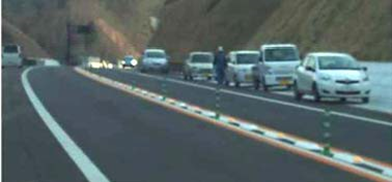
Figure 4.4.6-1 Residents evacuate on foot along the Kamaishi-Yamada Road (Motor road).
There is a similar report on the Sendai-Tobu Road, which was hit by a tsunami in the 2011 East Japan Earthquake, and several people evacuated to the Sendai-Tobu Road by running up the slope and climbing over the entry barrier, and survived 5. As shown in Figure 4.4.6-2 6 7, a lot of the people could be seen on the expressway during the tsunami.
According to the world bank report, it is indicated that roads, highways, and expressways provided safe evacuation sites and escape routes because they were designed with earthquakes and tsunamis in mind. It pays to take disaster reduction into account when designing transport and other infrastructure 8.
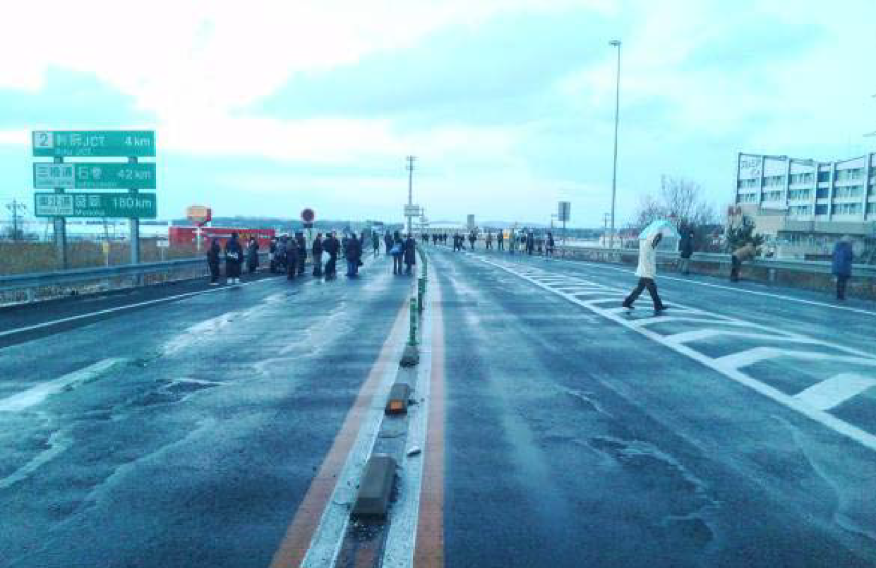
Figure 4.4.6-2 Evacuation situation on Sendai East Road (embankment)
There seems to be a room for improvement on tsunami evacuation from the road administrator point of view. This section will give you some ideas.
Tsunamis are caused by the uplift and subsidence of the seabed caused by earthquakes, and the upward and downward movement of seawater in the surrounding area. Because tsunamis move all the seawater from the sea bed to the sea surface, and because their wavelengths are very long, ranging from several kilometers to several hundred kilometers, the seawater becomes a huge mass of water that rushes to the coast 1.
The speed of a tsunami depends on the depth of the water it’s traveling through. The deeper the water, the faster the tsunami. In the deep ocean, tsunamis are barely noticeable, but they can move as fast as a jet plane, more than 500 mph (800 km/h). As they enter shallow water near land, they slow to approximately 20 mph (36 km/h), which is still faster than a person can run.
As tsunamis slow down, they grow in height. When they arrive on shore, most are less than 10 feet (3 m) high. In extreme cases, they can exceed 100 feet (30 m) when they strike near their source. Large tsunamis can flood low-lying coastal areas more than a mile inland 2.
Figure 4.4.6.1 2 shows an illustration of the relation between tsunami height and speed.
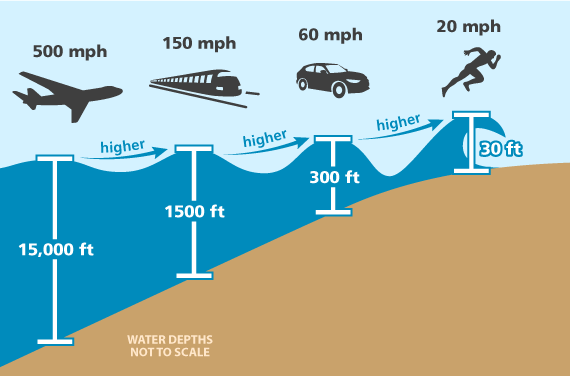
Figure 4.4.6.1 Speed of tsunami waves compared to common means of transportation
As in any other disaster, self-help is the most important way to protect yourself from tsunami. It is essential to know how each individual should act to protect his or her own life from a tsunami, especially a nearshore tsunami.
Table 4.4.6.2 shows the very important tsunami tips developed in Kushimoto-town 3.

Table 4.4.6.1 Tsunami Five Tips
When in a low elevation area, it is important to be aware of tsunamis whenever there is an earthquake, even if you are far from the coast. Tsunamis run up along the ground to higher elevations, and in the 2011 East Japan Earthquake, run-up heights of up to 40.1 meters were observed. When the epicenter is close, tsunamis may surge immediately after the earthquake. In the case of the 1993 Hokkaido Nansei-Oki Earthquake, a tsunami hit Okushiri Island shortly after the earthquake, killing many people. As a general rule, when an earthquake strikes, evacuate immediately from the coast to outside the expected flooding area 3.
Tsunami strikes repeatedly. The height of the tsunami is often higher in the second and third waves. After evacuating to higher ground, it is important to avoid returning to your home from the evacuation site because the tsunami did not come, or because the tsunami that did come was not very high.
In the case of far field earthquakes, tsunamis will hit after a long period of time, such as the 1960 Chile earthquake, which killed 119 people in Japan when a 6-meter tsunami hit after a very long time. In the case of distant earthquakes, there is a certain amount of time before a tsunami strikes, so it is necessary to obtain appropriate disaster prevention information 3.
The power of a tsunami is very strong. A healthy adult can be swept away by the surging water even if the height of the water is only 20-30cm. Also, the rivers are unobstructed, so they move further inland than the city. It is also important to evacuate in a direction away from the river, as tsunamis may hit from the river rather than from the sea. It is essential to evacuate to a safe place such as high ground as soon as possible 3.
It is important for families to decide on evacuation sites, evacuation routes, and emergency communication methods on a regular basis. It is a good idea to refer to the tsunami hazard map published by the municipality in which you live, and decide on the places where your family will meet in case of a disaster.
When evacuating due to a tsunami, be aware that evacuation should be to a "higher" location rather than a "farther" location. It is also important to consider multiple evacuation sites and routes, as roads may be impassable due to collapsed buildings or fires. As a general rule, it is better to evacuate on foot, since evacuation by car may cause traffic congestion. It is essential to evacuate to a "tsunami evacuation building" that is located above the expected tsunami inundation height, or to a building that is as sturdy and tall as possible 3.
It is very dangerous to go to the coast to see if a tsunami is coming, mistakenly believing that it will start at the ebb tide; the 1993 Hokkaido Nansei-Oki Earthquake, the 2003 Tokachi-Oki Earthquake, and even the 2004 Sumatra Earthquake in Sri Lanka and India saw tsunamis surge in without a previous ebb tide. There have also been reports of tsunamis flowing up rivers or back down drains, overflowing manholes and gutters. Even if you are far from the coastline, it does not mean you are safe 3.
Structural measures include relocation of villages to higher ground, construction of seawalls, and lock gates to make towns more resistant to tsunamis. It is also important to create a town that is easy to evacuate.
Infrastructure and public facilities such as roads, highways, and railways can be used as disaster management facilities in the event of floods, tsunamis, mudflows, and landslides. Facilities that are multifunctional are a particularly cost-effective approach to disaster management. Integrate various facilities into planning for disaster risk management (DRM). DRM plans should include a range of public facilities. For example, playgrounds and parking areas can become rescue team bases or spaces for transition shelters. Expressway embankments can become evacuation sites in the event of cyclones, floods, and tsunamis 1. Figure 4.4.6.2.1 shows the photos of the East Sendai Expressway that acts as a multi-functional road with a function of tsunami barriers.

Figure 4.4.6.2.1 East Sendai Expressway acted as a Multi-functional road with a function of tsunami barriers
Tsunami seawalls are designed to protect towns from tsunamis by enclosing the residential areas with high levees and blocking them from the sea. However, they are expensive to build, have a negative impact on the environment of the bay, and do not completely prevent tsunamis from inundating residential areas 1.
The primary measure against tsunamis is to move away from them. The most effective way to do this is to relocate the city itself to higher ground, which has been recommended for many years. In the areas affected by the 2011 East Japan Earthquake, housing relocation to higher ground has been promoted, especially in the areas that were severely affected by the tsunami. In order to relocate the houses to higher ground, 324 housing complexes have been constructed in 27 municipalities, and 8,389 housing lots have been built 2.
Land-use regulations, including those that relocate houses to higher ground, are successful but sometimes difficult to implement. For that reason, alternative measures need to be considered. Relocation deeply affects the livelihoods and daily lives of many people 3.
When a tsunami strikes, the primary rule of evacuation is not to move away from the tsunami along a plane, but to move up to higher ground than the tsunami.
There are towns that have been built with tsunami evacuation in mind. In these towns, the movement of people from the beach to the mountains at the time of tsunami evacuation intersects with the life path in normal time along the beach. At intersections, stopping to check and slows down walking speed for evacuation. Therefore, the corners of all crossroads were cut off to create streets where people can see both sides of the road while running.
In some cases, it is better for residents to build evacuation routes than for the government to do so. In one town, instead of a 15-minute evacuation route, the residents built their own route that took only six minutes.
For evacuation routes, signs that can be seen in the dark and work even during a power outage are needed, and solar-powered signs are encouraged 4.
In order to mitigate the damage caused by tsunamis, it is necessary to improve the self-defense capability of local residents against disasters through the provision of hazard information and other non-structural measures, in addition to the structural measures such as conventional development of coastal protection facilities.
A tsunami hazard map is a map that shows the areas that are expected to be damaged by tsunamis and the extent of the damage, along with disaster prevention-related information such as evacuation sites and routes, if necessary.
Table 4.4.6.2.1 5 6 is the tsunami design considerations Japan developed after the lessons from 2011 East Japan earthquake and ensuing tsunami.
Figure 4.4.6.2.2 7 shows an example of the tsunami level considered for tsunami hazard developing.
| Frequency of Occurrence | Policy |
|---|---|---|
Level 1 | Occurring roughly once in tens of years to over a hundred years | In addition to protecting human life, the government should develop or improve coastline preservation and other facilities from the viewpoint of protecting the property of residents, stabilizing the economic activities of local communities, and maintaining production bases effectively. |
Level 2 | Occurring roughly once in hundreds of years to a thousand years | The government should establish comprehensive tsunami measures using all possible resources, giving top priority to the protection of the lives of residents, etc., and focusing on evacuation. |
Source: This table has been created using a report of the group of experts organized by the Central Disaster Management Council to investigated earthquake and tsunami measures using lessons learned from the Great East Japan Earthquake (September 28, 2011)
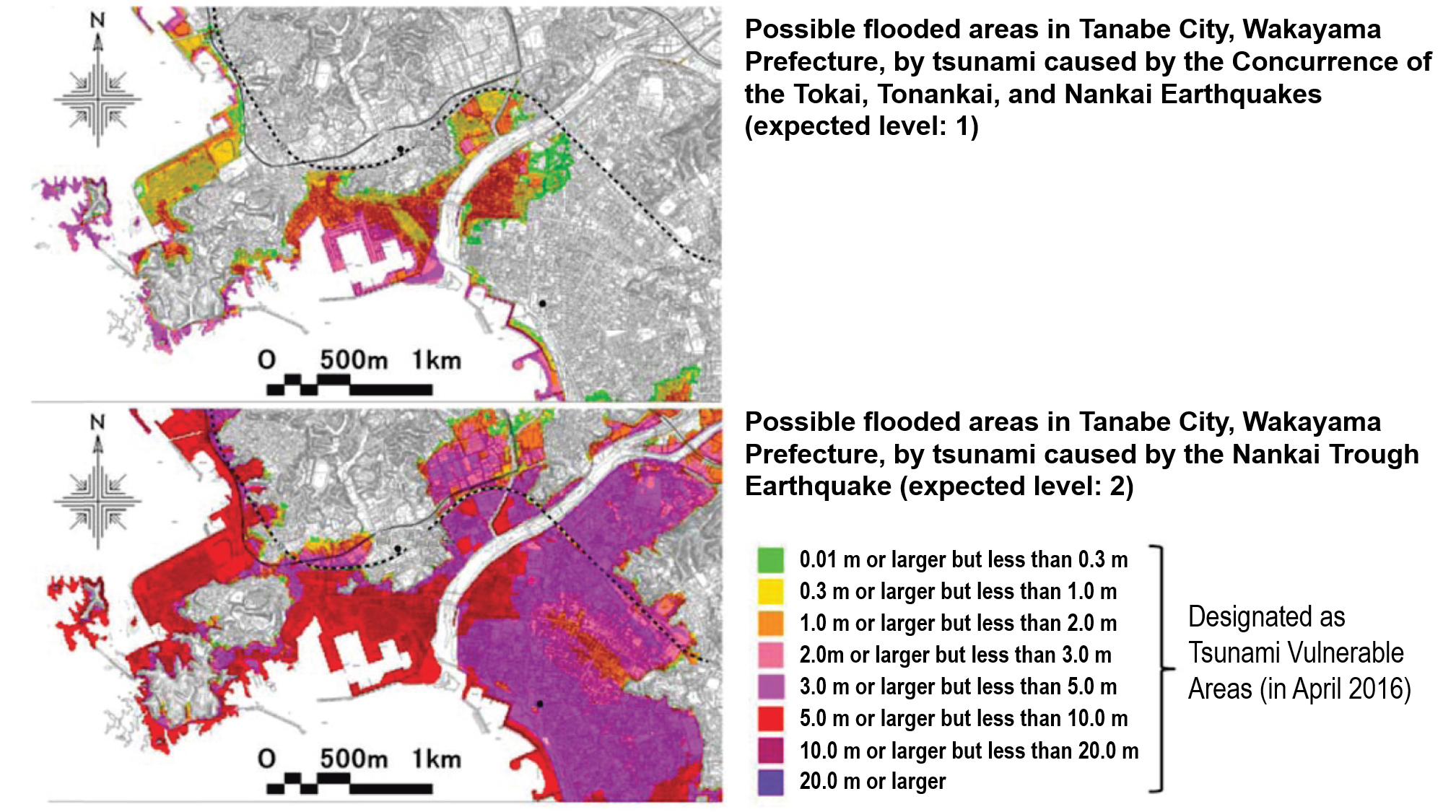
Figure 4.4.6.2.2 Examples of expected areas flooded by Two Tsunamis (level1 and Level 2)
It is very important to improve facilities for evacuation in cities along the coast. Currently, tsunami evacuation facilities can be categorized into the following; 1) tsunami evacuation tower, 2) tsunami evacuation building, 3) cooperation with public projects, 4) measures against the points that interrupt evacuation, and 5) providing materials for the improvement of evacuation routes by groups in local communities with dwindling populations.
Table 4.4.6.2.2 (Selectedly referenced to 8) shows the tsunami evacuation facilities cooperated with road related projects.
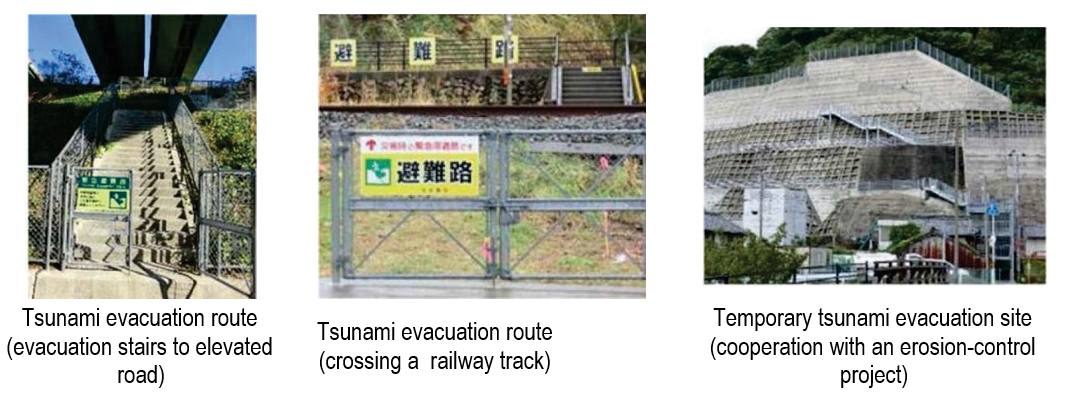
Table 4.4.6.2.2 Tsunami evacuation facilities cooperated with road related projects
Tsunamis are usually generated by great subduction zone earthquakes when the ocean floor is rapidly uplifted during the earthquake. The tsunami wave from a local subduction zone earthquake will arrive at the coast in approximately 10-20 minutes, and tsunami waves will continue to arrive periodically for several hours. When the shaking stops, people must immediately move inland to high ground. It is critical that residents and tourists know the landward extent of the local tsunami inundation zone used on evacuation brochures, their evacuation routes, and the nearest safe zones.
There are several categories of tsunami signs available:
An end-to-end evacuation route plan consists of (A) ‘You Are Here’ signage and route guidance for high traffic sites; (B) guidance signage established at the start of the route used in Cannon Beach and visible from the beach, as well as signage on posts along the route; (C) signage may also be painted on roads or footpaths with distance to safety identified; and finally (D)signage indicating that you have reached your safety destination (escape point) and have the inundation zone needs to be identified along every evacuation route (E). Table 4.4.6.2.3 9 shows the tsunami evacuation signs indicated from (A) to (E).
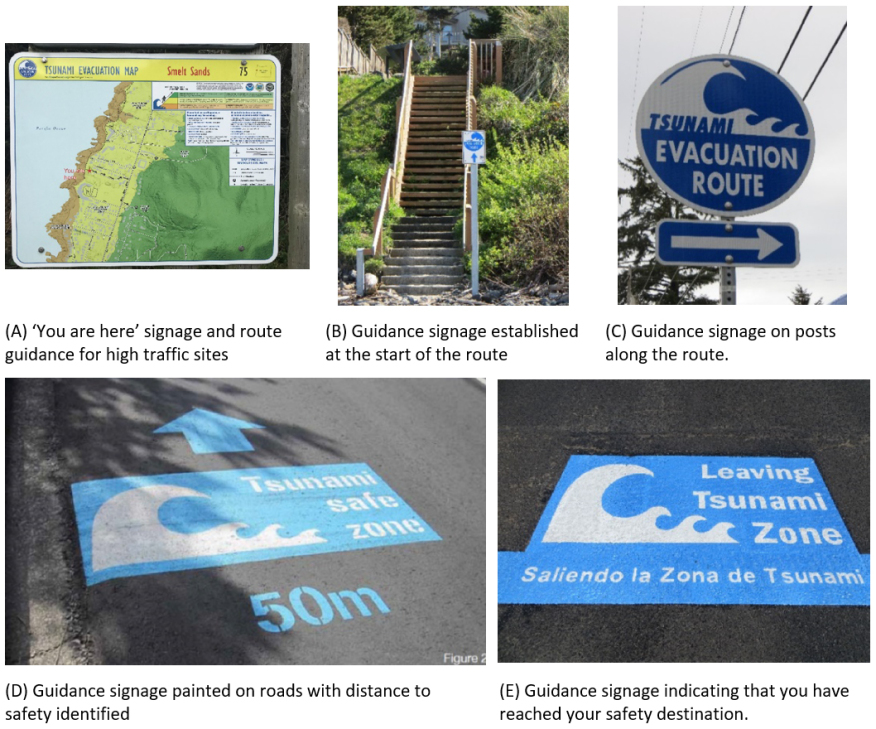
Table 4.4.6.2.3 Tsunami evacuation signs
It is important for the government and residents to conduct disaster simulation exercises together on a regular basis. In addition to general disaster exercises, special tsunami evacuation drills are sometimes conducted. In some places, drills are held involving tourists. It is important to confirm evacuation routes and locations in advance. It is also important to consider the issue of evacuation assistance for vulnerable people, such as the elderly and those in depopulated areas.
According to the final report of the Countermeasures for Earthquakes and Tsunami Based on the Lessons Learned from the 2011 Off-the-Pacific-Coast-of-Tohoku Earthquake, considerations on Tsunami countermeasures are discussed and summarized 1, 2.
First of all, as a premise, a tsunami is categorized into Level 1 (L1) and Level 2 (L2) when the scale of and measures against tsunami are considered. For the largest-scale L2 tsunami, which occurs extremely rarely but produces immense damage like the last one, every possibility, including the maximum levels, shall be considered. Consequently, comprehensive measures against tsunami shall be established that give priority to the protection of the lives of residents and that implement every possible measure for the evacuation of residents. For the L1 tsunami, which occurs comparatively frequently and where the height is low but produces serious damage, coastal protection facilities shall continue to be developed and improved from the viewpoint of protection of the property of residents and stabilization of economic activities in the local areas, in addition to the protection of human life.
A basic principle for the mitigation of damage caused by L2 tsunami is to combine tangible and intangible measures. Especially in the areas that are at risk of being hit by tsunami soon after an earthquake, the town shall be designed to ensure that residents evacuate in about five minutes. To be concrete, the following are suggested:
A working group established by the Cabinet Office to study tsunami evacuation measures had a careful discussion and came up with the following basic ideas for tsunami evacuation 3.
It is important to recognize that tsunamis are a natural phenomenon, and that there is always a possibility that a tsunami will strike.
Quick evacuation is the most effective and important tsunami countermeasure. In addition, structural measures, such as the construction of coastal protection facilities, and non-structural measures, such as reliable information dissemination, should all be positioned as measures to support quick evacuation.
1 Identification and Analysis of Factors Affecting Emergency Evacuations: Main Report (NUREG/CR-6864, AND2004-5901, Volume 1) https://www.nrc.gov/reading-rm/doc-collections/nuregs/contract/cr6864/v1/index.html
2 U.S. Department of Transportation, Report to Congress on Catastrophic Hurricane Evacuation Plan Evaluation https://www.fhwa.dot.gov/reports/hurricanevacuation/index.htm
1 Department of Homeland Security, Crisis Event Response & Recovery Access (CERRA) Framework: https://www.dhs.gov/publication/crisis-event-response-and-recovery-access
1 FEMA, Mass Evacuations: Determining the Impact of Tourist Populations on Evacuation and Shelter Planning https://www.hsdl.org/?abstract&did=783441
1 Federal Highway Administration, Using Highways During Evacuation Operations for Events With Advance Notice https://ops.fhwa.dot.gov/publications/evac_primer/primer.pdf
1 Hurricanes, NOAA https://www.noaa.gov/education/resource-collections/weather-atmosphere/hurricanes
2 Storm Surge Overview, National Hurricane Center, NOAA https://www.nhc.noaa.gov/surge/
1 https://www.jma.go.jp/jma/press/1104/13a/201104131600.html (In Japanese)
2 https://www.jma.go.jp/jma/kishou/know/faq/faq26.html (In Japanese)
3 http://www.thr.mlit.go.jp/bumon/kisya/kisyah/images/45064_1.pdf (In Japanese)
4 https://www.mlit.go.jp/policy/shingikai/content/001375672.pdf (In Japanese)
5 2014 N. Aoki et al, Structural and Operational Study of Slope Stairs for Tsunami Evacuation on Sendai-Tobu Expressway and Joban Expressway, Proc. of the 2014 annual meeting of JSCE Tohoku-division, May (In Japanese)
6 2014 N. Aoki et al, Structural and Operational Study of Slope Stairs for Tsunami Evacuation on Sendai-Tobu Expressway and Joban Expressway, Proc. of the 2014 annual meeting of JSCE Tohoku-division, May
7 https://www.thr.mlit.go.jp/road/fukkou/content/summary/bousai.html (In Japanese)
8 2014. The world bank, Learning from Mega disasters - Lessons from the Great East Japan earthquake-, August
1https://tokusuru-bosai.jp/refuge/refuge04.html (In Japanese)
4 https://www.bousai.go.jp/kohou/kouhoubousai/h22/05/special_01.html (In Japanese)
5 https://www.bousai.go.jp/kohou/kouhoubousai/h22/05/special_01.html (In Japanese)
6 https://www.bousai.go.jp/kohou/kouhoubousai/h22/05/special_01.html (In Japanese)
7 https://www.bousai.go.jp/kohou/kouhoubousai/h22/05/special_01.html (In Japanese)
8 https://www.bousai.go.jp/kohou/kouhoubousai/h22/05/special_01.html (In Japanese)
9 https://www.bousai.go.jp/kohou/kouhoubousai/h22/05/special_01.html (In Japanese)
12014, Federica Ranghieri and Mikio Ishiwatari, Learning from Mega-disasters -lessons from the great East Japan earthquake, World Bank, pp50, January
22014, Federica Ranghieri and Mikio Ishiwatari, Learning from Mega-disasters -lessons from the great East Japan earthquake, World Bank, pp50, January
32007, N.Syudouet al., Tsunami encyclopedia, Asakura publishing, November
4https://www.mlit.go.jp/report/press/toshi06_hh_000041.html
52012, World bank, The Great East Japan Earthquake--Learning from Megadisasters : Knowledge Notes, Executive Summary, September
62007, N.Syudou et al., Tsunami encyclopedia, Asakura publishing, November
72011 Central Disaster Management Council, Cabinet office of Japan, Report of the Committee for Technical Investigation on Countermeasures for Earthquakes and Tsunamis Based on the Lessons Learned from the “2011 off the Pacific coast of Tohoku Earthquake”, September, http://www.bousai.go.jp/kaigirep/chousakai/tohokukyokun/pdf/Report.pdf
82011 White paper, Ministry of
https://www.mlit.go.jp/english/white-paper/2011.pdf
92018, N. Kiuchi, et al., Recent Development of Urban Disaster Mitigation in Japan with a Focus on Tsunami, March, www.nilim.go.jp/lab/jbg/othertheme/tsunami-mitigation-e.pdf
102018, N. Kiuchi, et al., Recent Development of Urban Disaster Mitigation in Japan with a Focus on Tsunami, March, www.nilim.go.jp/lab/jbg/othertheme/tsunami-mitigation-e.pdf
11Oregon office of emergency management, Oregon Tsunami Evacuation Wayfinding Guidance, https://www.oregon.gov/oem/Documents/Tsunami_Evacuation_Signage_and_Wayf...
12018, N. Kiuchi, et al., Recent Development of Urban Disaster Mitigation in Japan with a Focus on Tsunami, March, www.nilim.go.jp/lab/jbg/othertheme/tsunami-mitigation-e.pdf
22011 Central Disaster Management Council, Cabinet office of Japan, Report of the Committee for Technical Investigation on Countermeasures for Earthquakes and Tsunamis Based on the Lessons Learned from the “2011 off the Pacific coast of Tohoku Earthquake”, September, https://www.bousai.go.jp/kaigirep/chousakai/tohokukyokun/pdf/Report.pdf
32012, Tsunami evacuation warking group, Central disaster management council, Cabinet ffice of Japan, Reporton tsunami evacuation measures, July, https://www.bousai.go.jp/jishin/tsunami/hinan/pdf/report.pdf